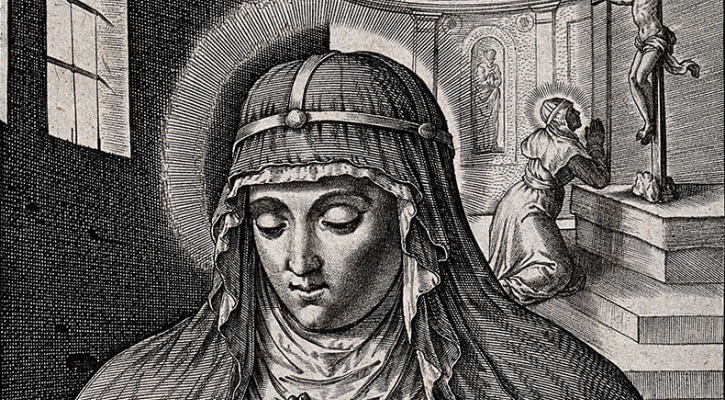Image: Saint Bridget of Sweden | Line engraving | Wellcome Images
Saint of the Day for July 23
(c. 1303 – July 23, 1373)
Saint Bridget of Sweden’s Story
From age 7 on, Bridget had visions of Christ crucified. Her visions formed the basis for her activity—always with the emphasis on charity rather than spiritual favors.
She lived her married life in the court of the Swedish king Magnus II. Mother of eight children—the second eldest was Saint Catherine of Sweden—Bridget lived the strict life of a penitent after her husband’s death.
Bridget constantly strove to exert her good influence over Magnus; while never fully reforming, he did give her land and buildings to found a monastery for men and women. This group eventually expanded into an Order known as the Bridgetines.
In 1350, a year of jubilee, Bridget braved a plague-stricken Europe to make a pilgrimage to Rome. Although she never returned to Sweden, her years in Rome were far from happy, being hounded by debts and by opposition to her work against Church abuses.
A final pilgrimage to the Holy Land, marred by shipwreck and the death of her son, Charles, eventually led to her death in 1373. In 1999, Bridget, Saint Catherine of Siena and Saint Teresa Benedicta of the Cross, were named co-patronesses of Europe.
Reflection
Bridget’s visions, rather than isolating her from the affairs of the world, involved her in many contemporary issues, whether they be royal policy or the years that the legitimate Bishop of Rome lived in Avignon, France. She saw no contradiction between mystical experience and secular activity, and her life is a testimony to the possibility of a holy life in the marketplace.
Saint Bridget of Sweden is a Patron Saint of:
Europe








